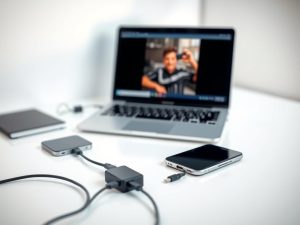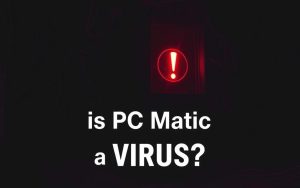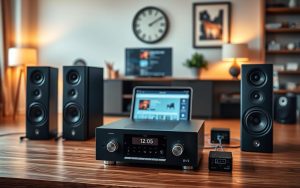Table of Contents
Many CNC enthusiasts explore ways to connect their CarveWright directly to a PC. While this seems efficient, the manufacturer designed the machine with a memory card system for a reason. This approach protects both your computer and the equipment from shop hazards like dust and electrical interference.
The included USB programmer serves as the primary transfer method. Unlike standard PCMCIA cards, the proprietary memory card requires this specific adapter. This intentional design ensures seamless file transfers while maintaining safety.
For those seeking optimized workflows, alternative strategies exist. Understanding the manufacturer’s choices helps in finding practical solutions without compromising performance.
Can You Hardwire a CarveWright to a Computer System?
Unlike industrial CNC setups, this machine operates independently for safety reasons. The manufacturer’s design prevents direct USB or ethernet connections, prioritizing durability over convenience.
Manufacturer’s Design Limitations
The electrical architecture lacks ports for live data streaming. This isolation shields the machine from voltage spikes and computer crashes. Industrial CNCs often require protected workstations, but CarveWright uses a self-contained approach.
Why the Memory Card System Is Used
Shop environments expose equipment to dust, vibrations, and moisture. Key advantages of the proprietary card system include:
- Fail-safe transfers: Physical media avoids corruption from interrupted connections.
- Durability: Cards withstand debris better than exposed cables.
- Long-term reliability: Fewer moving parts reduce maintenance needs.
This method ensures consistent performance for projects, even in harsh conditions.
How to Transfer Projects to Your CarveWright
Efficiently transferring designs to your CarveWright requires understanding its unique workflow. The proprietary memory card system ensures seamless file transfers, but preparation is key.

Using the Provided USB Memory Card Programmer
The included USB programmer bridges your PC and the machine. Follow these steps:
- Insert the memory card into the programmer.
- Connect to your computer via USB.
- Drag converted files (MPW/.PTN) to the card.
“Always eject the card properly to avoid corruption. Forum users report fewer errors with this method.”
Preparing Files for the CarveWright System
CNC carving requires specific formats. Use the table below to avoid compatibility issues:
| File Type | Use Case | Software Required |
|---|---|---|
| MPW | Design projects | CarveWright Designer |
| PTN | Pattern libraries | Pattern Editor |
For best results:
- Check software version compatibility with your machine generation.
- Optimize designs for the system’s processing limits.
Optimizing Your CarveWright Workflow
Streamlining operations with your CarveWright involves smart tool and software choices. While OEM parts ensure compatibility, third-party options can expand capabilities—if selected carefully.
Third-Party Tooling: Risks and Alternatives
Forum discussions highlight successful non-proprietary bit implementations, but geometry mismatches cause chatter or breakage. Key considerations:
- Shank size: 1/4″ collets are standard; verify tolerances.
- Vendor reliability: Rockler and Freund bits show consistent results in user tests.
“Freund’s spiral upcut bits reduced tear-out in hardwood projects by 40% compared to generic brands.”
Software Options for Design and Compatibility
While CarveWright Designer handles MPW files, importing STL/DXF requires paid upgrades. For advanced users:
- V-Carve Pro: Offers superior 3D modeling but lacks direct CNC integration.
- Pattern Editor: Essential for converting third-party designs to PTN format.
Upgrading machine firmware often resolves software conflicts—check forums for version-specific tips.
Conclusion
Proprietary ecosystems like CarveWright balance limitations with reliability. The memory card system ensures durable, error-free transfers—ideal for workshop conditions.
New users should anticipate a learning curve. Testimonials highlight a year to master advanced CNC techniques. Start with OEM tools, then explore vetted upgrades like spiral bits.
For growth, leverage community templates and firmware updates. Realistic expectations paired with the machine’s robust design yield long-term success.
FAQ
Can the CarveWright be directly connected to a PC?
No. The CarveWright system relies on a memory card for project transfers instead of a direct PC connection. This design ensures stability and reduces interference risks.
Why doesn’t the CarveWright support hardwired connections?
The manufacturer prioritizes reliability. A wired link could introduce electrical noise or software conflicts, potentially disrupting precision carving operations.
What’s the safest way to transfer projects to the machine?
Use the included USB memory card programmer. Load designs onto the card via the CarveWright software, then insert it into the machine for execution.
Are there third-party tools to bypass the memory card system?
While some unofficial solutions exist, they void warranties and risk damaging the CNC hardware. Stick with approved methods for optimal performance.
Which software formats work with the CarveWright?
The system uses proprietary .MPN and .PTN files. Convert designs using CarveWright Designer before transferring them via the memory card programmer.









